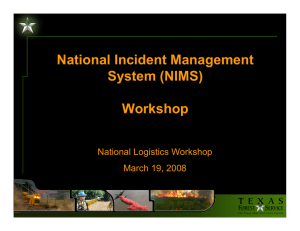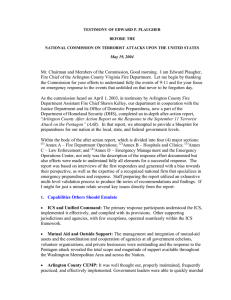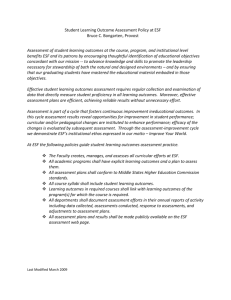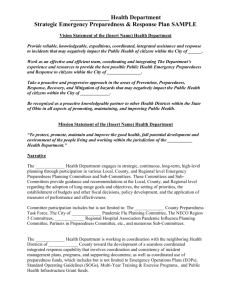2010 Guide Presentation
advertisement
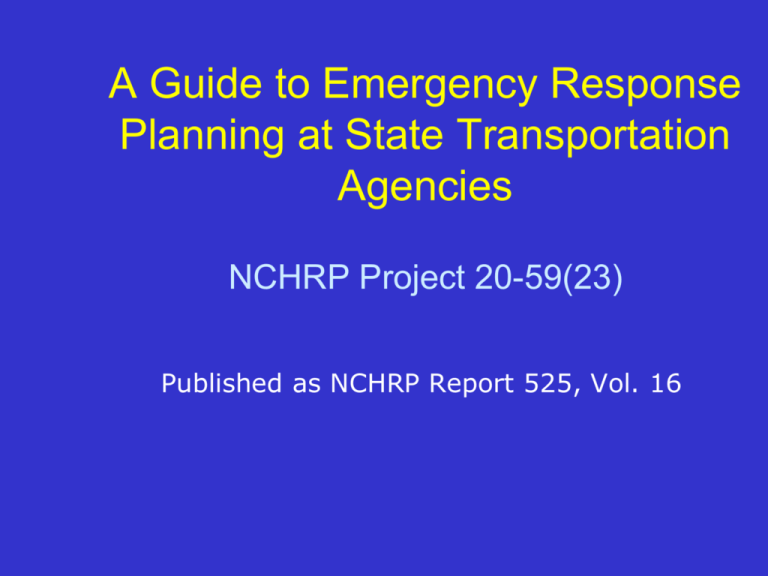
A Guide to Emergency Response Planning at State Transportation Agencies NCHRP Project 20-59(23) Published as NCHRP Report 525, Vol. 16 Project Purpose Project 20-59(23) initiated to replace 2002 Guide to Updating Highway Emergency Response (ER) Plans for Terrorist Incidents Expand scope Implement new national policy and guidance Project Objective . . . to develop a recommended guide for use by state transportation agencies in planning and developing their organizational functions, roles, and responsibilities for emergency response within the all-hazards context of NIMS (the National Incident Management System) Why NIMS is Important National uniformity in emergency management Multi-agency cooperation: • Collaborative planning • Interoperable communications Incident Command System • Unified Command • Structured response, even to minor incidents • Flexibility to grow/adapt to meet complexities of large-scale events Standardize resource definitions Continued improvement through after-action reporting and inclusion in emergency operations plans Project Overview— 2002 Guide A Guide to Updating Highway Emergency Response (ER) Plans for Terrorist Incidents Quick, direct response to 9/11 Addressed terrorist attacks, emphasis on weapons of mass destruction (WMD) Highway oriented Preliminary guidelines Update Project Stimuli New national initiatives: National Incident Management System (NIMS) all-hazards approach, Incident Command System (ICS) National Response Framework (NRF) Guidance National Preparedness Guidelines (NPG) Examples Consistency through 15 standardized Emergency Support Functions (ESFs) • National Unified Goal (NUG) for Traffic Incident Management (TIM) Update Project Stimuli (cont’d) Build on completed research: • Guide to Emergency Transportation Operations (ETO) • Complements risk management guidance, including Costing Asset Protection: An All Hazards Guide for Transportation Agencies (CAPTA) A different approach from 2002: • Now have how-to Comprehensive Preparedness Guide (CPG) 101 • Emphasis on NIMS/NPF/NUG compliance • Much of 2002 Guide still useful 2010 Guide Differences Emergencies―larger scale All hazards―more than traffic issues Multimodal―more than highways Operationally oriented and practical NIMS/NRF/NPG―more application and emphasis State transportation agency in support role (ESF #1, etc.) Covers preparedness functions to support state and local emergencies to include: • Plan, organize, staff, train, exercise, manage, implement, and fund preparations Not a how-to-plan Guide―refer to Comprehensive Preparedness Guide 101 Some Key Tenets of Emergency Management Planning Agency-wide emergency operations plan State transportation agency plans and procedures complement state’s overall emergency structure and plans Agency plans adhere to all-hazards approach Use conventional emergency management planning cycle (plan, prepare, respond, recover) Key Tenets (cont’d) Acknowledge that different state transportation agencies (particularly DOTs) view their response roles differently Encourage agencies to be full players within state emergency management community Recognize need for agencies to understand basic NIMS concepts of incident command system (ICS), including unified command Encourage agencies to reallocate resources used originally to prepare for terrorist incident responses to pre-event preparedness efforts that enable agency response to full range of emergencies National Context for Emergency Response Implementation of HSPD-5, Management of Domestic Incidents Implementation of HSPD-7, Infrastructure Identification, Prioritization, and Protection Implementation of HSPD-8, National Preparedness Emergency Management Planning Process Plan Recover Prepare Respond PLAN Steps Form collaborative planning team Research state’s hazards and their consequences Analyze information Determine goals and objectives Develop and analyze courses of action and identify resources PLAN Steps (cont’d) Write plan Approve and implement plan Train staff on plan Exercise the plan • Evaluate its effectiveness • Create list of improvements demonstrated in exercise Review, revise, and maintain plan PREPARE Steps Develop approaches to implement state transportation agency roles and responsibilities during emergencies, as specified in state’s EOP and supporting annexes and referenced materials Establish protocols to communicate with employees and general public Develop plans and procedures to manage traffic under emergency conditions Develop mobilization plans to ensure readiness to deploy agency personnel and resources Ensure cost tracking and accountability RESPOND Steps Initiate emergency response Address emergency needs and requests for support Coordinate emergency response with state transportation agency providing support Support evacuation/shelter-in-place/ quarantine in conjunction with law enforcement Conclude response RECOVER Steps Restore services and traffic to affected area Identify and implement lessons learned Learn–learn–learn Replan Agency Involvement by Incident Level State Transportation Agency Planning Contexts Within role as transportation lead in State Emergency Operations Plan (EOP) • Primary: ESF #1―Transportation • Secondary: ESF #3―Public Works ESF #6―Mass Care ESF #13―Public Safety/Security ESF #14―Long-Term Recovery – others as needed Within agency’s own EOP 2010 Guide Products Guide • Summary • Overview for state transportation agencies (authorities, etc.) • High-level requirements based on national policies and guidelines • High-level self-assessment w/pointers toward Section 6 Section 6: Resource Guide • Organizational/staffing/position guidance • Decision-making sequences • Detailed self-assessment and resource lists 2010 Guide Products (cont’d) Appendices (A–M) • Applicable parts of 2002 Report (A) • Details of material summarized in Sections 1–5 (B–G) • Links to model emergency operations plans (H) • Policy/procedural memoranda/MOUs (I) • Training/exercise plans (J) • Annotated bibliography (K)* • White Paper on Emergency Levels (L)* • PowerPoint presentation (M)* *Available by download TRB Web site: http://www.trb.org/SecurityPubs Search for A Guide to Emergency Response Planning at State Transportation Agencies Thank You Any Questions?
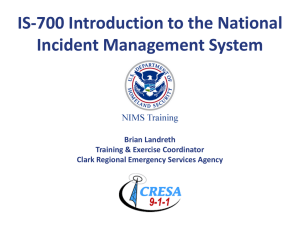

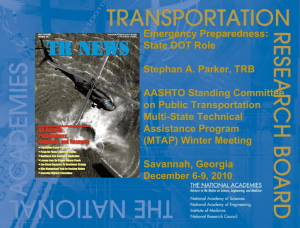
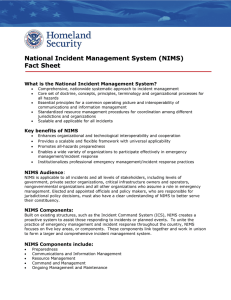


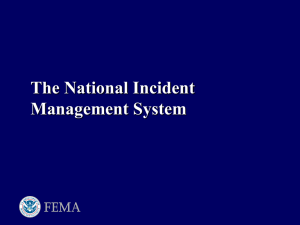
![[school/department/work unit] EOP](http://s3.studylib.net/store/data/007019024_1-9182da65872ec3349f5f8dad4e6a3909-300x300.png)
